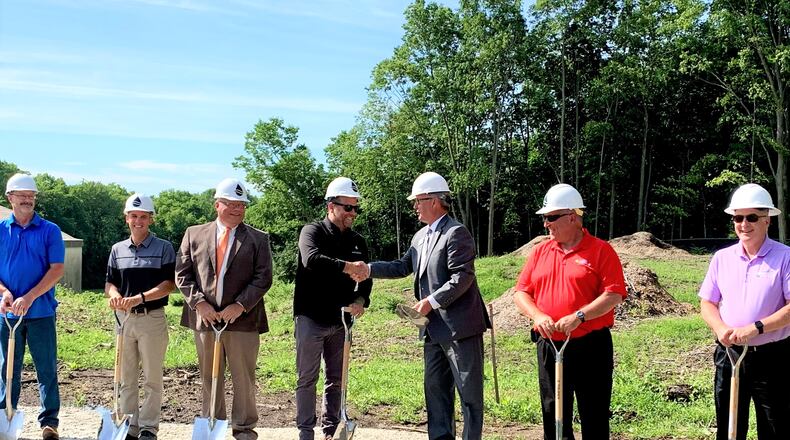The construction, off Beaver Valley Road in Beavercreek, will also increase the county’s water system capacity from 9.5 million to 12 million gallons per day, and lay the footprint for increasing capacity to 16 million gallons in the future.
County Commissioner Tom Koogler said the upgrade will take the county’s water service and economic development “to the next level.”
“Softened water has benefits for commercial establishments and businesses, not having to replace their faucets and water softeners as often,” he said. “Even our residents won’t have to lug that bag of salt downstairs every month.”
In May, commissioners approved rebalancing Greene County’s water rates to pay for the upgrade, increasing water rates by 3%, and dropping sewer rates by 2.25%. Both changes start on Jan. 1.
Greene County purchases water from Montgomery County for the western portions of their customer base, to the tune of $500,000 annually. The facility has an estimated two-year construction timeline, and Greene County will likely start to see those savings once the facility is completed around 2024.
Not buying water from Montgomery County has another benefit in reducing residents’ potential exposure to PFAS, or “forever chemicals,” officials said. Dayton and Montgomery County water has shown trace amounts of PFAS (short for per- and polyfluoroalkyl substances) in recent years, prompting Dayton to sue Wright-Patterson Air Force Base and the Department of Defense last year for allegedly failing to stop the contaminants from entering a source of the city’s drinking water.
New guidance from the U.S. Environmental Protection Agency, issued in June, recommends less than 0.02 parts per trillion in drinking water for two varieties of the chemical, PFOA (Perfluorooctanoic acid) and PFOS (Perfluorooctanesulfonic acid), down from the previous 70 parts per trillion.
Currently, testing indicates Greene County water is clear of PFAS, Koogler said, and the new filtration systems are designed to keep it that way.
Shook Construction and engineering firm AECOM, which partnered to design the facility, will oversee construction. The design phase took roughly 16 months, said Eric Rees, Shook-AECOM director of pre-construction.
“There’s a lot of challenges in construction right now with escalating costs of materials and availability of materials,” Rees said. “Those are some challenges we’ll have to overcome. We’re excited to get started with it and take the next step to complete this and bring it online.”
About the Author

